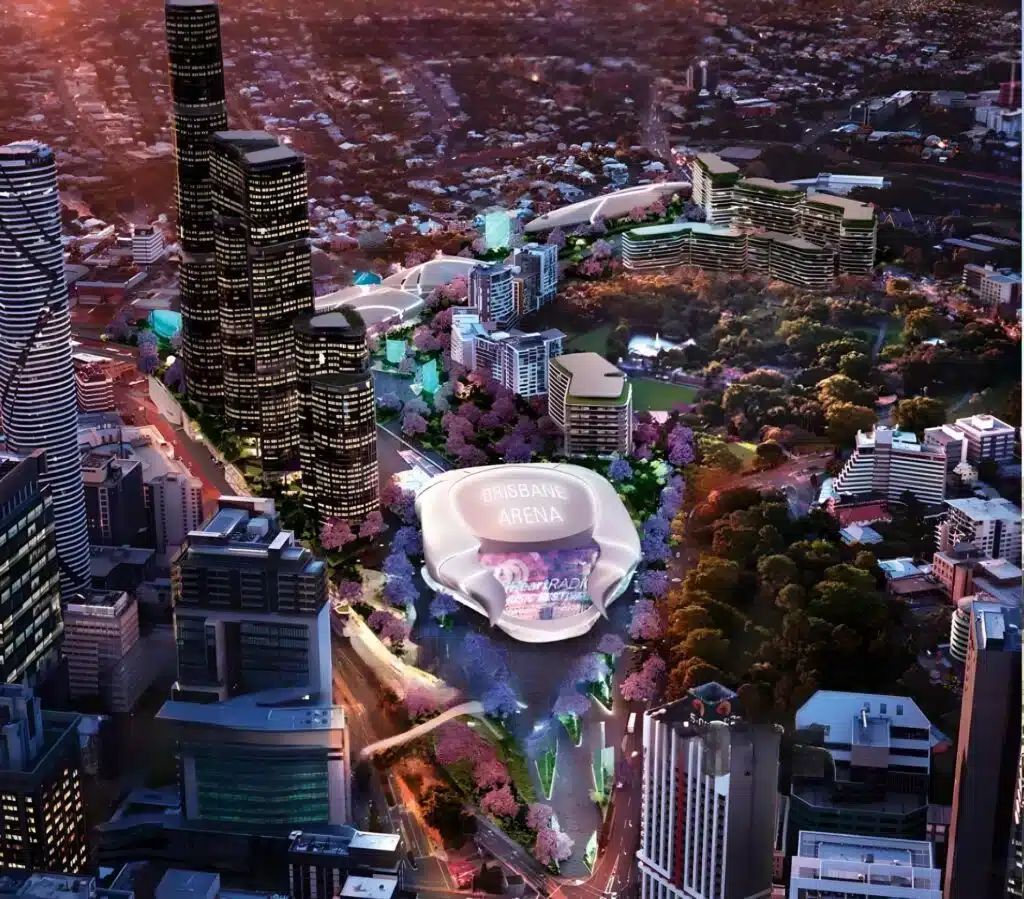


As the world meets in Paris for the 2024 Olympic Games, dubbed the Timber Games, the Australian Sport, Recreation and Play Innovation Awards have crowned the timber-rich $65m Northcote Aquatic and Recreation Centre (NARC) as Australia’s Top Sports Building.
Crowned last month, the aquatic centre’s striking glulam roof is the visual standout—with the mass timber supplied by Theca Timber, part of a massive cassette system assembled over the 25-metre indoor pool.
Designed by Warren and Mahoney, responsible for building New Zealand’s largest all-timber building, the net-zero building combines brick and timber to “break down the project’s overall ‘visual mass’ through the careful modulation of façade and roof elements.”
Built by Kane Construction, the new centre opened in October and was one of just a handful of Australian 6-Star Green projects last year recognised as “the world’s best practice.”

It utilises zero waste targets, prioritises water efficiency, and incorporates natural products—including more than 300 cubic metres of mass timber used extensively in the structure and roof of the main swimming halls.
“Aquatic centres are known to be one of the most energy-intensive building typologies,” said Warren and Mahoney, adding that “they operate 365 days a year, 24 hours a day, and require immense energy to maintain pool temperature and condition.
“From the outset, the project was an opportunity to become a sustainability exemplar, demonstrating how we can drive better value for money, better environmental performance, and stewardship of our resources through innovation, commitment and partnership.”

Supplied and fabricated by Theca Timber, an Australian and Italian-based mass timber fabricator responsible for some of Australia’s highest-profile projects – including the Macquarie University Law Building, the Sydney Fish Market, and Brisbane’s Upper House, the PEFC-certified roof system features battens that are distinctly low maintenance and developed with careful modulation of façade and roof elements.
Theca Timber is a specialist in developing net-zero timber buildings in the Australian marketplace: “Being a crossover company with access to the European industry of timber products manufacturers and representing one of the largest glulam and timber solution manufacturers, Rubner Holzbau, it means we are the right partner for a range of projects,” it said.
As a result, “we can provide technical support and advice during design, full structural design, certification according to AS standards, installation sequences, total supplying of a prefabricated structure with deliveries straight to job sites and technical assistance during erection.”
In May, Wood Central revealed that the Brisbane 2032 Olympic Organising Committee had approved the $1.87 billion Minor Venues Program, which will see venues built per the International Olympic Committee’s “New Norms.”
The “New Norms” include more than 100 measures to make the Games more affordable, beneficial, and sustainable. Notably, they also require using more sustainable building materials, like mass timber, green steel, and recycled concrete, and, where feasible, upcycling venues.
Last year, Premier Miles pledged to build greener, cleaner, and more sustainable venues as part of an AU $7 billion infrastructure commitment for the Brisbane games. As a result, organisers are now targeting a 6-Star Green Star rating (like NARC) for all new or upgraded venues.


As the first games to be delivered under the “New Norms,” the eyes of the Olympic World are now on Brisbane to build on the legacy of Paris, Milan, and Los Angeles—the first to align with the Paris Climate Agreement.
According to Toby Hodsdon, Associate Principal at Arup, these new norms create opportunities to build Brisbane’s venues out of timber. In a presentation on the Timber Queensland website, Mr Hodsdon said that timber-led venues not only help organisers meet sustainability targets but are also lightweight – and therefore assist with future alteration, increase the speed of construction, and manage supply risk.